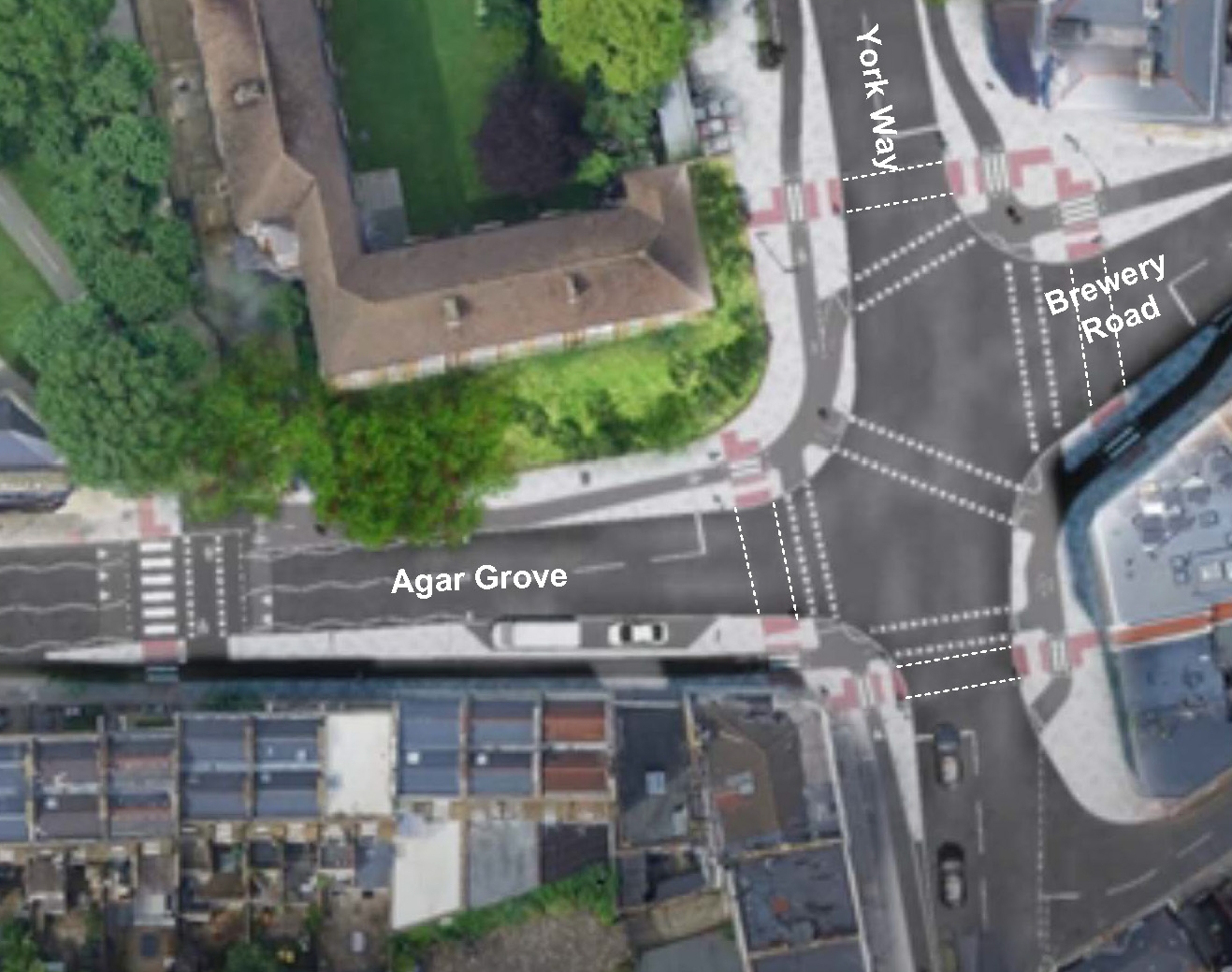Camden is now consulting on a junction redesign for York Way, Agar Grove, and Brewery Road, aiming to raise the standard for safe, easy cycling and walking. This innovative design takes inspiration from tried and tested cycling infrastructure in places like Manchester, Waltham Forest, and the Netherlands, adapting what’s worked elsewhere to fit Camden’s busy streets.
Safer Junctions
Having safer junctions protects vulnerable road users such as children cycling to school and less confident riders, reduces the risk of collisions and enables more people to experience the freedom of cycling. Safer junctions help to make cycling and walking a real choice.
There’s a real need for better cycling infrastructure here. The junction currently sees around 1 in every 5 road users travelling by bike. Over the past five years, there have been 15 collisions involving people walking or cycling, showing why changes are needed.
How does it work?
Camden’s proposed Circulating Cycle Stage Junction layout separates cyclists and pedestrians from motor traffic, lowering the chance of risky interactions and creating a friendlier space.

Key safety features:
- Protected cycle lanes all the way around the junction
- Left turn freedom for cyclists: make a left even when lights are red for motor traffic
- Shorter, safer crossing distances for pedestrians
- Dedicated signals for people walking and on bikes
- Refuge islands and zebra crossings give pedestrian priority and comfort
The clever design provides these safety features without any time penalty on signals for motor traffic. By keeping traffic flowing, these junctions prove that safety and efficiency can go hand-in-hand for everyone.
Inspiration from Other Areas
How you can support
Camden needs your feedback to make these changes happen! Fill out the online survey and support this proposal to solve dangerous junctions and make our streets safer for us all:
Read more and support the consultation here (consultation closes 20 Nov 2025).